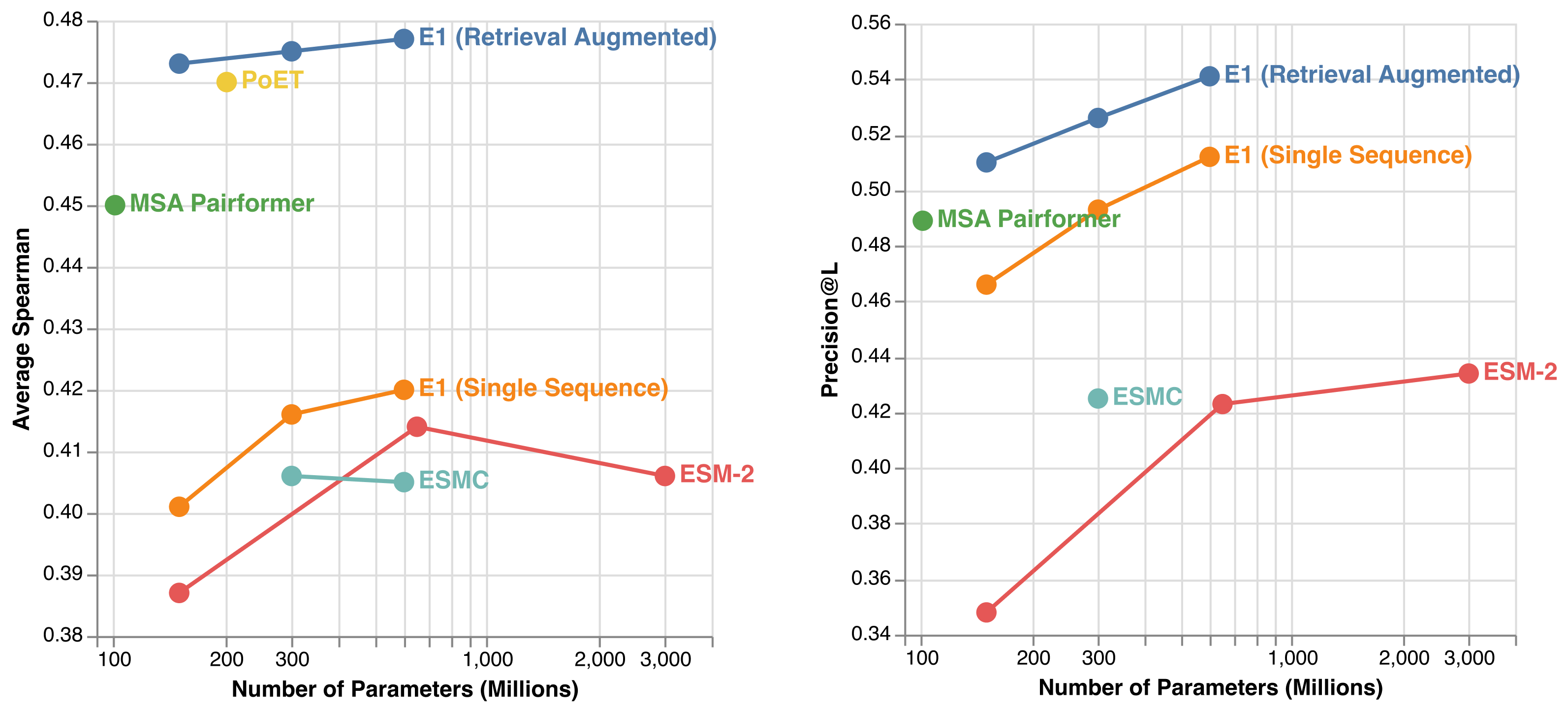Proteins are fundamental components of the molecular machinery of life, driving biological processes such as molecular transport, enzyme catalysis, immune response, and gene regulation. Their diverse functions underpin applications across many industries—from pharmaceuticals to agriculture—enabling gene therapies, vaccines, and industrial enzymes, among other products. To harness these functions, protein engineers design, modify, or select amino acid sequences that fold into proteins with desired activities.
At Profluent, we build Protein Language Models (PLMs) that offer a data-driven framework for modeling the relationships between protein sequence, structure, and function. Trained in a self-supervised manner on large databases of natural protein sequences, PLMs learn evolutionary patterns shaped by natural selection over billions of years. Recent approaches have incorporated explicit evolutionary context through retrieval augmentation during inference. Retrieval-augmented PLMs (RA-PLMs) enhance standard single-sequence models by providing homologous sequences during training and inference. This allows the model to leverage evolutionary context directly.
Today, we are excited to release Profluent-E1, a new family of retrieval-augmented protein encoder models trained with a masked language modeling objective. We leverage Profluent’s large-scale Protein Atlas and introduce targeted architectural and training innovations that yield more performant RA-PLMs. Profluent-E1 models achieves state-of-the-art performance among models trained exclusively on sequence data in both single-sequence (when no homologous sequence are provided at inference time) and retrieval-augmented mode. We release three E1 model variants – with 150M, 300M, and 600M parameters – freely for research and commercial use, enabling immediate application to tasks such as fitness prediction, protein ranking, and representation learning.

Setting a New Bar for Protein Encoder Models

Protein language models have been shown to be effective zero-shot fitness predictors for local mutational landscapes. We use the 217 Deep Mutational Scan substitution assays from Protein Gym (v1.3) benchmark to evaluate the performance of E1 models in both single sequence and retrieval-augmented modes. E1 models outperform all ESM-2 and ESMC family models in single sequence mode at corresponding model sizes, indicating that E1 can be used as a drop-in replacement for existing single sequence encoder models without loss of performance (See Left Figure above). When evaluated with homologs at inference time, E1 models substantially outperform corresponding single sequence metrics and achieve state of the art performance compared to similarly situated publicly available models (i.e model that only take homologous sequences as additional context during inference) like MSA Pairformer and PoET.
Next, we compared the performance of E1 models against publicly available models on the long-range contact prediction task for protein sequences derived from CAMEO and CASP15 targets. We use the Categorical Jacobian approach to test the model's internal knowledge of the residue contacts without dependence on a specific model architecture. E1 models outperform the ESM family of models at all scales when tested in single sequence mode (see Right Figure above). Moreover, we see consistent improvements in performance when including homologous sequences during inference, indicating that the model is able to use information in-context to determine putative 3D contact information.
Overall, Profluent-E1 family of models demonstrates the continued value of research to improve retrieval-augmented protein language models and provides a new foundational tool for AI-driven protein design that advances both predictive performance and practical utility for a large class of protein design workflows.